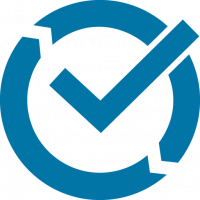Driving Continuous Improvement to the Entire Organization

The Agile Manifesto states that “at regular intervals, the team reflects on how to become more effective, then tunes and adjust its behavior accordingly.” Despite being a key principle of the manifesto, continuous improvement eludes some organizations. They find themselves “doing agile” instead of “being agile.”
In traditional agile approaches, the sprint retrospective provides a valuable mechanism for the team to identify problems, create solutions, and continually improve its effectiveness. At the team level, the retrospective process works fairly well, as self-organizing teams take it upon themselves to prioritize and change those processes and practices that have the most impact.
However, when teams encounter larger organizational issues beyond their control, such as project structure; interorganizational communication; system access or provisioning; or ensuring the team is adequately resourced in terms of personnel, knowledge, and tools, continuous improvement is often ground to a halt.
While program, portfolio, and enterprise-level retrospectives provide a good start, they are often not sufficient to drive change alone. Though one team’s top priority may provide a huge impact across the entire enterprise, those priorities can often get lost in the noise of the enterprise’s list of competing priorities.
Teams that succeed at making change at the organizational level make use of a variety of other agile ceremonies and practices to provide feedback. Transparent and collaborative risk meetings, communities of practice, retrospective meetings, and end-user feedback provide a rich set of inputs and opportunities to address larger issues that cut across the team, the company, and their customers. Making use of multiple communication avenues to raise concerns and potential solutions can help build a larger support group, refine the solution collaboratively, and build greater awareness across the enterprise.
Another important exercise for driving continuous improvement beyond the team is through value stream mapping. Almost everyone has an opinion about how an organization’s business process works, but very few people actually have a complete, end-to-end understanding. Often, individuals only consider their part of the process and not how their piece impacts the enterprise or how bottlenecks and wait times slow delivery. Even in the most well-run businesses, it’s nearly impossible to understand the entire process.
Through value stream mapping, an organization can look at imperial data to truly understand its processes, including where things are running smoothly and where they are not. Then it can begin tackling inefficiencies and larger organizational issues that directly impact software development teams.
Software projects are complex and somewhat unpredictable by nature, and organizations need to be able to adjust to “facts on the ground” in order to foster positive change and avoid stagnation. Having continuous improvement processes for the entire organization can ensure your teams continue to move forward and do not become frustrated by issues that prevent them from reaching their true potential.

